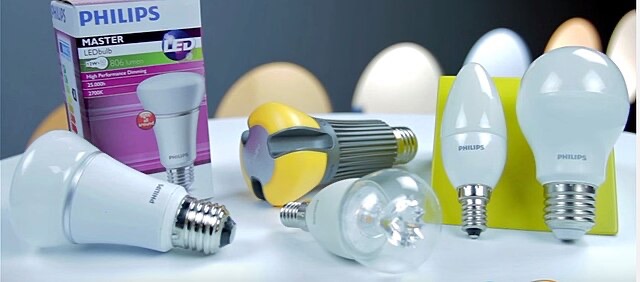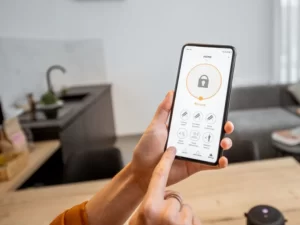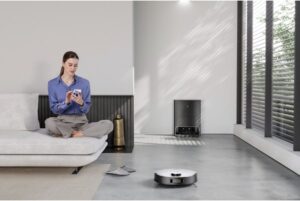What Are Smart LED Light Bulbs?
Smart LED light bulbs are like the cool, tech-savvy cousins of traditional bulbs. Unlike your typical light bulb, these little geniuses connect to your home network and allow you to control lighting with just a tap on your phone or a voice command. You can dim them, change their color, schedule them to turn on or off, and even sync them with music or movies. They’re part of the broader smart home ecosystem that’s transforming how we interact with our living spaces.
At their core, they still do what all light bulbs do—illuminate a room—but with added functionality that makes your life easier, more efficient, and even a bit more fun. Imagine walking into your home and your lights automatically switch to a warm white hue because it’s evening and that’s your preferred setting after a long day. Or setting a “party” scene that floods the room with colors that match the beat of your playlist. That’s the magic of smart bulbs.
These bulbs typically connect via Wi-Fi, Bluetooth, or specialized smart home protocols like Zigbee or Z-Wave. You can control them through dedicated smartphone apps or integrate them with voice assistants like Amazon Alexa, Google Assistant, or Apple’s Siri. Many models are now compatible with Matter, the new universal smart home standard that promises seamless cross-brand connectivity.
Why Upgrade to Smart LED Bulbs in 2025?
2025 is shaping up to be a massive year for smart lighting. With smart home devices becoming more affordable and intuitive, there’s really no excuse not to upgrade. But it’s not just about novelty—smart LED bulbs in 2025 offer superior energy efficiency, extended lifespans, and deep integration with other smart devices.
We’re also seeing smarter AI-driven automation. Your bulbs can now learn your habits and adjust themselves accordingly. For example, if you always dim your living room lights at 8 PM, the system picks up on that and starts doing it for you. Some even use geofencing to detect when you’re almost home and prepare your environment just the way you like it.
Another big reason to upgrade? Energy savings. LED bulbs already use less power than traditional incandescent bulbs, but the ability to schedule them or turn them off remotely makes it even easier to cut down your electricity bill. Add to that the convenience of automation and voice control, and upgrading to smart lighting becomes a no-brainer.
Key Features to Look for in a Smart LED Light Bulb
Connectivity Options (Wi-Fi, Bluetooth, Zigbee, etc.)
One of the first things you’ll want to consider when shopping for a smart bulb in 2025 is how it connects to your network. Connectivity determines ease of setup, reliability, and how well your bulbs will integrate with other smart devices.
-
Wi-Fi: These bulbs connect directly to your home network. No need for extra hardware like hubs, but they can clog your Wi-Fi if you have too many connected devices.
-
Bluetooth: Great for simple setups or if you just want to control lights from your phone while you’re nearby. But they lack remote access unless paired with a hub or smart assistant.
-
Zigbee/Z-Wave: Require a hub (like the Philips Hue Bridge), but offer faster response times and don’t overload your Wi-Fi. They’re also more stable for large smart home setups.
-
Matter Support: The newest and most exciting addition in 2025. Matter ensures cross-platform compatibility, so your bulb works with almost any ecosystem—Google Home, Alexa, Apple HomeKit, etc.
Think about your current setup. If you’re already using Alexa or Google Home, look for bulbs that integrate seamlessly with those. Want a future-proof investment? Go for ones that support Matter.
Brightness and Color Temperature Adjustability
Not all smart bulbs are created equal when it comes to lighting quality. You want a bulb that’s not only bright enough for your needs but also offers the right color tones for different times of day or activities.
-
Lumens: This is the measure of brightness. Most smart bulbs offer between 800 to 1,100 lumens, which is plenty for general room lighting.
-
Color Temperature: The ability to adjust from warm whites (around 2700K) to cool whites (6500K) is a game-changer. Use warm tones for relaxing evenings and cool tones for focused work.
-
RGB Color Options: Want to set the mood? Look for full-color bulbs that let you choose from millions of colors. Whether it’s a chill blue for yoga or vibrant red for a party, the options are endless.
Color and brightness customization can totally transform the vibe of a room, giving you a tailored experience for every occasion. Whether you’re reading a book, watching a movie, or hosting a dinner party—lighting sets the tone.
Voice Assistant Compatibility (Alexa, Google Assistant, Siri)
Let’s be honest—nothing feels more futuristic than telling your lights to turn off without lifting a finger. Voice control is a must-have feature in 2025.
Look for bulbs that support:
-
Amazon Alexa: One of the most commonly supported assistants.
-
Google Assistant: Ideal if you’re deep into the Google ecosystem.
-
Apple HomeKit/Siri: A bit more limited in options but growing rapidly with Matter support.
Having voice control is more than just cool—it’s practical. Imagine your hands are full with groceries or you’re bundled up in bed; just say, “Turn off the lights,” and you’re good to go.
App Control and Automation Features
The beauty of smart bulbs is that you can control them from anywhere. Forgot to turn off your bedroom lights before leaving for work? No problem—just open the app.
-
Scheduling: Program your lights to follow a routine.
-
Scenes: Set custom lighting environments for different moods or tasks.
-
Grouping: Control multiple lights at once—like all bedroom lights or the whole house.
A well-designed app can make a world of difference. Look for bulbs that offer intuitive interfaces and smart features like sunrise/sunset automation, vacation modes, or integration with other smart devices like thermostats and cameras.




